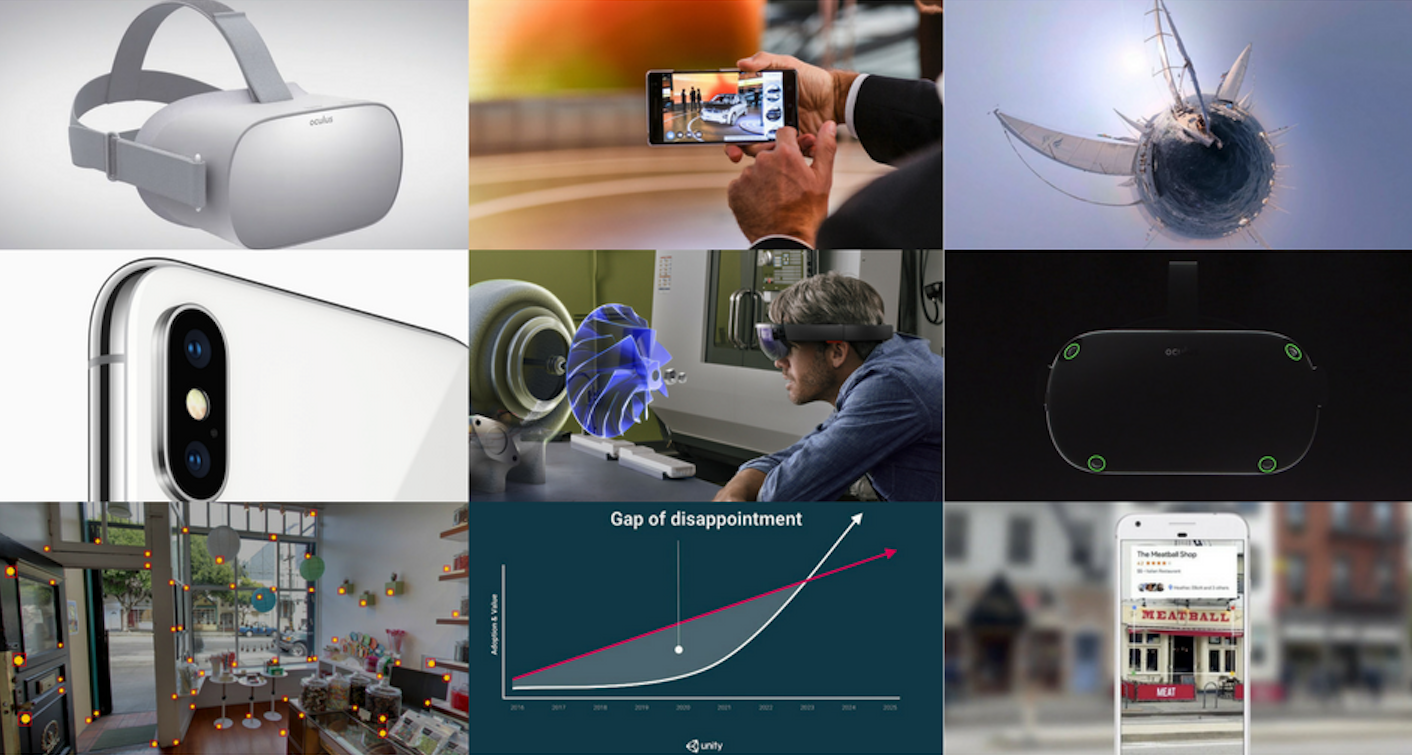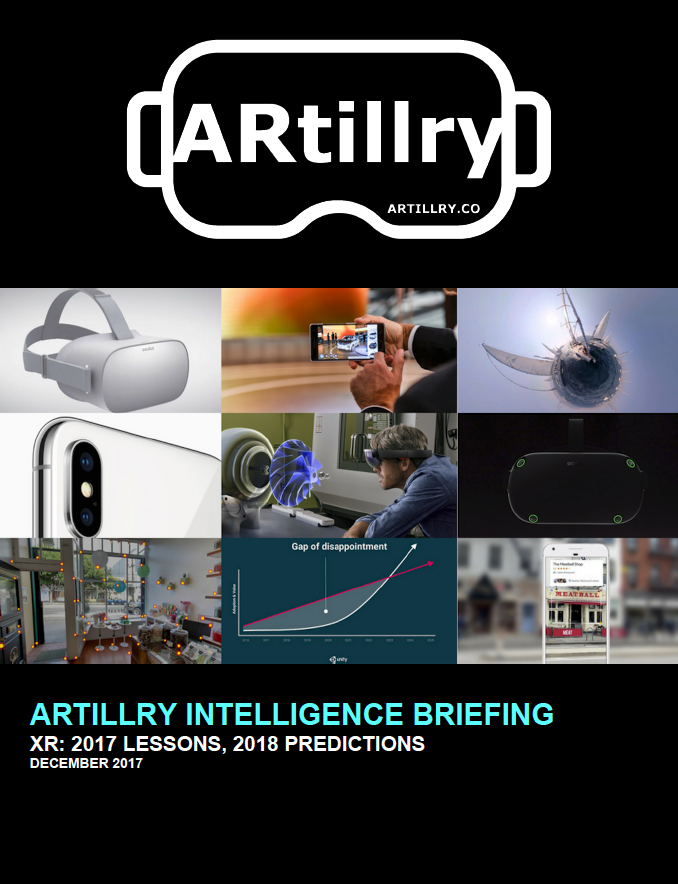2017 was quite a year for AR & VR (a.k.a. XR). As is often the case with emerging technology, XR’s early days have included lots of excitement. This year kicked off as such, continuing from 2016. But excitement levels began to recede in mid-2017 as several market signals emerged.
So the question is: Where are we now with AR & VR, and what can we expect in 2018? Drawing from ARtillry’s XR coverage and market sizing over the past two years, we have ventured to answer this question.
As a historical comparison, e-commerce was heralded in the early 2000’s dot-com bubble. But the market sizing and exuberance at the time wasn’t overblown: In fact it underestimated eventual revenues. It was just a bit early.
ARtillry Intelligence believes that has parallels – though a different timeline – to where we now sit with XR. Massive opportunity exists but expectations should be adjusted about its timing. This can help inform go-to-market strategies and operational execution for XR players.
But how and when will it all come together? What are the top factors and trends to examine? What are key drivers for interlocking pieces in the XR universe (AR, VR and enterprise and consumer segments of each)? And what does it all mean for where you sit?
We’ll take a look back at 2017 to extract measurable lessons, and predict XR’s direction in 2018. It’s all about zeroing in on the pockets of greatest opportunity, and -- as always -- timing. Spoiler alert: there will be real revenue and value creation in 2018, but they’ll require strategic precision.
Preview: 2018 Predictions
1. Enterprise AR Pulls Ahead: Enterprise AR will pull ahead of Consumer VR as the leading XR sub-sector (consumer VR held that leading position in 2017), reaching revenue of $10 billion. The biggest adopters in 2018 will be manufacturing and assembly, which have the clearest ROI potential for enterprise AR. The biggest challenge will be organizational red tape and sales cycles. So the name of the game will be quantifying ROI, demonstrating bottom line impact and having domain knowledge in enterprise verticals (in addition to immersive tech competency). Those who can hit those marks will be most successful in tapping into enterprise AR’s $48 billion opportunity by 2021.
2. Mobile AR Rebounds: After surging in 2016 due to Pokémon Go, then dipping in 2017, mobile AR revenues will rebound in 2018, exceeding $1 billion. This will mostly come from app revenue, including Niantic’s Harry Potter game that inherits Pokémon Go’s architecture and game mechanics. The predominant mobile AR business model in 2018 will follow Pokémon Go’s established model of in-app purchases. We’ll also begin to see experimentation with ad support or sponsorship that are tied to location-based discovery and commerce (i.e. retail store visits, navigation, product info).
3. Mobile AR Standards Develop: After disappointing mobile AR app libraries in 2017 (in both quantity and quality), 2018 will continue to see many misfires and unsuccessful apps. A small minority will break out and begin to define the category and seed user demand. They will apply native thinking, “AR-first or “AR-Only” approaches, but these success stories will be very limited in quantity – likely fewer than ten. At least one of these apps will break out in 2018 as mobile AR’s first truly native and category-defining “killer app,” and will be location-based gaming, social, or commerce oriented.
4. Consumer VR Gets a Jolt: Oculus Go will launch in Q2 2018 and fuel consumer adoption more so than any other single headset to date. Its sales will exceed one million units in 2018, and begin to climb to a leading headset market share in later years. With a $199 price tag, and more room for discounting, this will jumpstart VR’s sluggish sales and adoption rates. It will also create a greater installed base to motivate developers and content creators to build content, thus attracting more users to VR in a sort of virtuous cycle. This process will take more than one year to play out, but will accelerate in 2018 to the tune of about 20 million total headsets sold (including cardboard and low-cost units throughout China); and a cumulative installed base of about 43 million headsets globally.
5. Unifying Technologies Emerge: Beyond slower-than-expected consumer VR adoption, the sector has further suffered from fragmentation. The already small user base is divided into smaller subsets when you consider the different platforms and walled gardens (HTC, Oculus, Daydream, etc.). This makes it harder for developers to justify ROI in investing in content because an already-small addressable market gets smaller. Alleviating this challenge will be a major industry priority in 2018, including interoperability across platforms, more low-barrier and cross-platform development tools like Google Blocks and Poly; and unifying technologies such as WebVR and WebAR. Google will take the lead on – and benefit most from – web-based delivery of AR and VR experiences. The AR cloud will develop and gain importance as a repository of geo-tagged data and content to enable and populate AR apps and games. It will be a critical component, given AR’s understated need to access mapping and positional data to overlay graphics properly.




